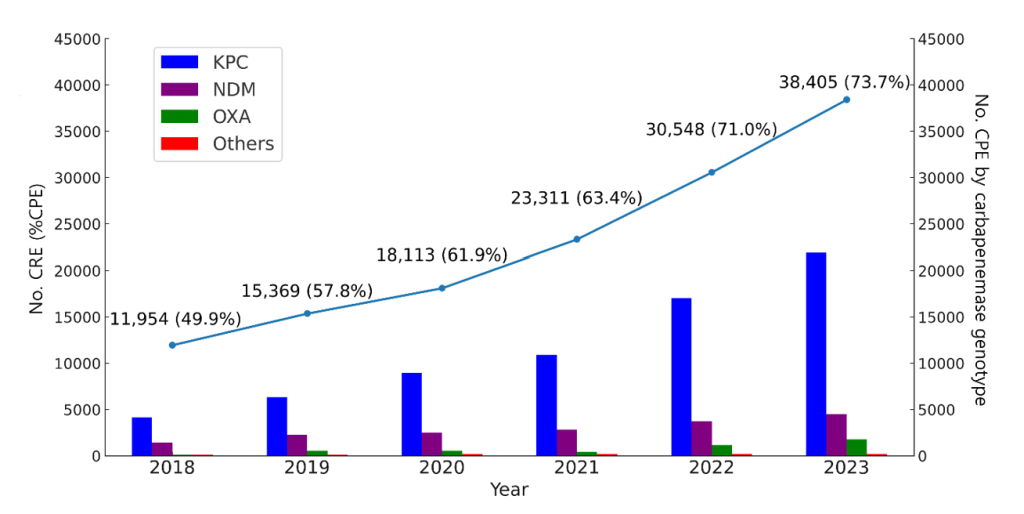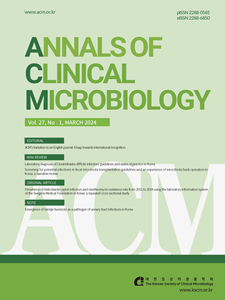Supplementary Table 2. Prevalence (%) of total antimicrobial resistance in five gram-positive and four gram-negative bacteria
Ann Clin Microbiol 2025;28(2):10. A multicenter study on antimicrobial resistance in bloodstream pathogens isolated in Korea: a survey study Download table Organisms Antibiotics Gram-positive organisms Gram-negative organisms SAU SEP SPN EFM EFA ECO KPN ABM PAE Penicillins Penicillin 85.6 93.7 46.8 90.5 10.9 Ampicillin 90.3 0.7 70.6 98.2 […]
Supplementary Table 1. Distribution of hospitals responding to the survey on the prevalence of antimicrobial resistance
Ann Clin Microbiol 2025;28(2):10. A multicenter study on antimicrobial resistance in bloodstream pathogens isolated in Korea: a survey study Download table Antibiotics Organisms Gram-positive organisms Gram-negative organisms SAU SEP SPN EFM EFA ECO KPN ABM PAE First Dup First Dup First Dup First Dup First Dup First Dup First Dup First Dup First Dup Penicillins […]
Table 4. Prevalence of antimicrobial resistance of four gram-negative bacteria
Ann Clin Microbiol 2025;28(2):10. A multicenter study on antimicrobial resistance in bloodstream pathogens isolated in Korea: a survey study Download table Antibiotics Organisms ECO KPN ABM PAE First Dup First Dup First Dup First Dup Penicillins Penicillin Ampicillin 70.2 71.1 96.9 99.8 Penicillin/beta-lactamaseinhibitor […]
Table 3. Prevalence of antimicrobial resistance of five gram-positive bacteria
Ann Clin Microbiol 2025;28(2):10. A multicenter study on antimicrobial resistance in bloodstream pathogens isolated in Korea: a survey study Download table Antibiotics Organisms SAU SEP SPN EFM EFA First Dup First Dup First Dup First Dup First Dup Penicillins Penicillin 85.1 86.0 93.0 94.2 38.9 51.7 89.9 91.3 6.5 23.7 Ampicillin […]
Table 2. Species distribution of bacterial isolates tested for antimicrobial susceptibility in 16 university-affiliated hospitals in 2023
Ann Clin Microbiol 2025;28(2):10. A multicenter study on antimicrobial resistance in bloodstream pathogens isolated in Korea: a survey study Download table Organisms No. of isolates % of isolates First isolate Duplicate First isolate Duplicate Gram-positive bacteria 72,972 58,830 27.2 33.7 Staphylococcus aureus 23,692 22,892 8.8 13.1 Staphylococcus epidermidis 19,339 21,974 7.2 12.6 Enterococcus faecalis 14,694 […]
Table 1. Baseline characteristics of the 16 university-affiliated hospitals participating in the survey
Ann Clin Microbiol 2025;28(2):10. A multicenter study on antimicrobial resistance in bloodstream pathogens isolated in Korea: a survey study Download table Categories No. (%) No. of beds ≥ 1,000 6 (37.5) 700–999 9 (56.3) 500–699 1 (6.3) Location Seoul 7 (43.8) Other citiesa) 9 (56.3) Isolate count First isolate 9 (56.3) Duplicate 7 (43.8) Total […]
Current challenges in Korean medical research and highlights from this issue of Annals of Clinical Microbiology
Editorial Hae-Sun Chung Department of Laboratory Medicine, Ewha Womans University College of Medicine, Seoul, Korea Correspondence to Hae-Sun Chung, E-mail: sunny0521.chung@ewha.ac.kr Ann Clin Microbiol 2025;28(2):11. https://doi.org/10.5145/ACM.2025.28.2.5Received on 13 June 2025, Revised on 16 June 2025, Accepted on 16 June 2025, Published on 27 June 2025.Copyright © Korean Society of Clinical Microbiology.This is an Open Access […]
A multicenter study on antimicrobial resistance in bloodstream pathogens isolated in Korea: a survey study

Original article Jung-ah Kim1*, Sae Am Song2*, Sunjoo Kim3, Sunggyun Park4, Kwangsook Woo5, Yu Kyung Kim6 1Department of Laboratory Medicine, Soonchunhyang University Seoul Hospital, Seoul, Korea2Department of Laboratory Medicine, Inje University College of Medicine, Busan, Korea3Department of Laboratory Medicine, Gyeongsang National University College of Medicine, Jinju, Korea.4Departments of Laboratory Medicine, Keimyung University School of Medicine, […]
Table 1. Rapid pathogen identification and antimicrobial susceptibility tests for application to positive blood cultures or direct blood samples that are currently available or expected to be available in Korea
Ann Clin Microbiol 2025;28(2):9. Diagnostic stewardship in clinical microbiology: current status and perspectives in Korea Download table Platform/kit (manufacturer) Species-identification range Antimicrobial-resistance determination Molecular diagnostics cobas® ePlex BCID Panels (Roche Diagnostics) BCID-GP: 20 GP with Pan-GN, Pan-CandidaBCID-GN: 21 GN with Pan-GP, Pan-CandidaBCID-FP: 15 fungal organisms mecA, mecC, vanA, vanB, CTX‑M, IMP, KPC, NDM, OXA‑23/48, VIM BioFire® FilmArray BCID2 […]
Fig. 2. Application of diagnostic stewardship to blood culture practice in a clinical microbiology laboratory. After BACTEC loading at 1-17 13:07, there were six moments of reports including a critical value report (CVR) and an infection control alert until the final report: (1) Positive signal at 1-18 01:28, (12.4 h from an aerobic bottle); (2) Gram stain results as gram-negative rods seen at 1-18 02:24; (3) Call to clinician at 1-18 02:27 recorded as a CVR, which initiates an automatic consult with infectious disease specialists for antimicrobial stewardship program, 3. KPC/ CTX-M producing Klebsiella pneumoniae positive by BCID2 at 1-18 03:49; (4) Species identification and antimicrobial susceptibility test using colony at 1-19 11:59; (5) Phenotyping and genotyping of carbapenemase at 1-20 10:39; (6) A panic value for issuing an infection control alert.
Ann Clin Microbiol 2025;28(2):9. Diagnostic stewardship in clinical microbiology: current status and perspectives in Korea Download image
